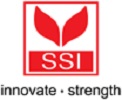Get a Project Report
Profitable Business Ideas for Startups
How to Start a Vermicompost Business
The vermicompost business has never been better! With the rise in popularity of sustainable living and gardening, vermicompost (the dark, nutrient-rich material that your worms create) has never been more popular to help you achieve your gardening goals! However, where do you start? This how-to guide will help you figure out if this business venture is right for you and, if so, will help you navigate the world of vermicomposting like a pro.
What is Vermicompost and Vermiculture Industry?
What is vermicompost? It’s defined as soil that has been fertilized with worm feces. Worms eat organic waste and poop out nutrient-rich matter called castings, which can be used as fertilizer. This method of recycling human and animal waste is not only efficient and earth-friendly, but it results in an inexpensive and high-quality soil conditioner for your garden or farm. So how do you start a vermicompost business? Learn about types of worms for composting and ways to get started. To operate a profitable vermicompost manufacturing business requires more than just piling up castings from worms; generally speaking, there are three important areas to consider: getting raw materials (known as feedstock), storing those materials until they can be processed into finished compost (and marketing those finished products). So what is vermiculture? Basically, it’s very similar to composting in that bacteria, protozoa and other microbes break down organic matter. The difference is that instead of using air and water, you use earthworms (Eisenia foetida) or red wigglers (Lumbricus rubellus). These worms take in food waste or organic scraps, digest it and pass out castings—also known as worm poop or worm gold.
Advantages of Organic Waste
Organic waste has its own market, where people are ready to pay more for organic waste. If you are serious about making business in organic waste management, here are some advantages of Organic Waste that you may not be aware of? When treated through anaerobic digestion process, Organic waste helps reduce greenhouse gas emission by 30% with respect to conventional treatment technologies such as Landfilling or incineration. All countries under Paris Climate Agreement have committed themselves towards phasing out fossil fuels and reducing their carbon footprint by 2030. In order to achieve their targets, it is essential for them to rely on renewable sources of energy which will be generated from biogas or Bio-fuel.
Global Market Demand
Opportunity in Vermicompost Manufacturing Industry are innumerable, especially in developed countries. Waste generated by industry is one of biggest sources of organic materials that can be used for vermicomposting. Industries dealing with wood pulp, cotton, textile, leather, sugarcane and fruit processing are some major industries generating large amounts of waste per day. Since these wastes are rich in carbon source they provide excellent environment for earthworms to thrive upon and hence ideal for vermicomposting process. These industries can easily adopt vermicomposting as their primary means of waste disposal as it helps them conserve huge amount of money. Moreover, since earthworm excretions along with processed organic material will become composted, it will also help reduce air pollution and mitigate greenhouse gases thus helping to achieve global warming target set by UNO.
Opportunities in Vermicompost Manufacturing Industry
If you’re looking for opportunities in one of today’s fastest growing industries, it’s worth considering investing in vermicompost. Organic waste produced by livestock and human activities needs to be treated and disposed of in an environmentally friendly manner, and vermicompost production does just that. A successful venture into vermicompost manufacturing industry has immense returns, especially when government support is taken into account. Why Should You Consider Investing in Vermicompost Manufacturing Industry? The global population is expected to reach nine billion by 2050; currently we produce enough food annually to feed 10 billion people.






















